All products featured are independently chosen by us. However, SoundGuys may receive a commission on orders placed through its retail links. See our ethics statement.
Bose Noise Canceling Headphones 700 vs Sony WH-1000XM3
Published onApril 5, 2022
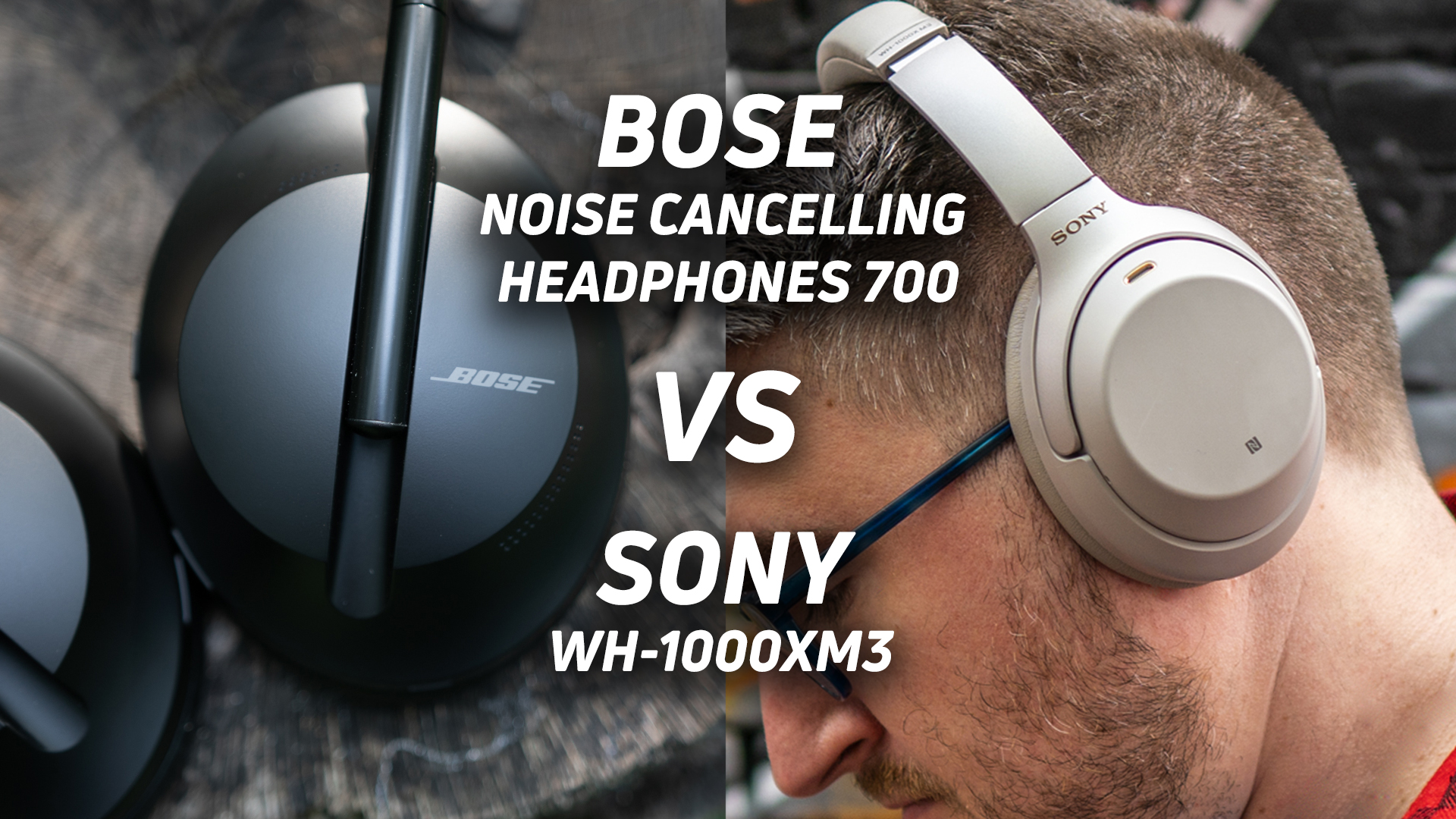
Years back, the big debate was how the Sony WH-1000XM3 compared to the Bose QC 35 II. Today, we’re looking at how the active noise canceling (ANC) Sony WH-1000XM3 fares against the Bose Noise Canceling Headphones 700. Bose’s headset is more modern than the WH-1000XM3, but since Sony’s headset often goes on sale, many still want to know which is the better buy. Does Bose outdo Sony, or should you save your money and go with the years-old model?
Editor’s note: this article was updated on April 5, 2022, to include a new comparison chart and standardized microphone samples.
Does the Sony WH-1000XM3 have better build quality than the Bose Noise Canceling Headphones 700?
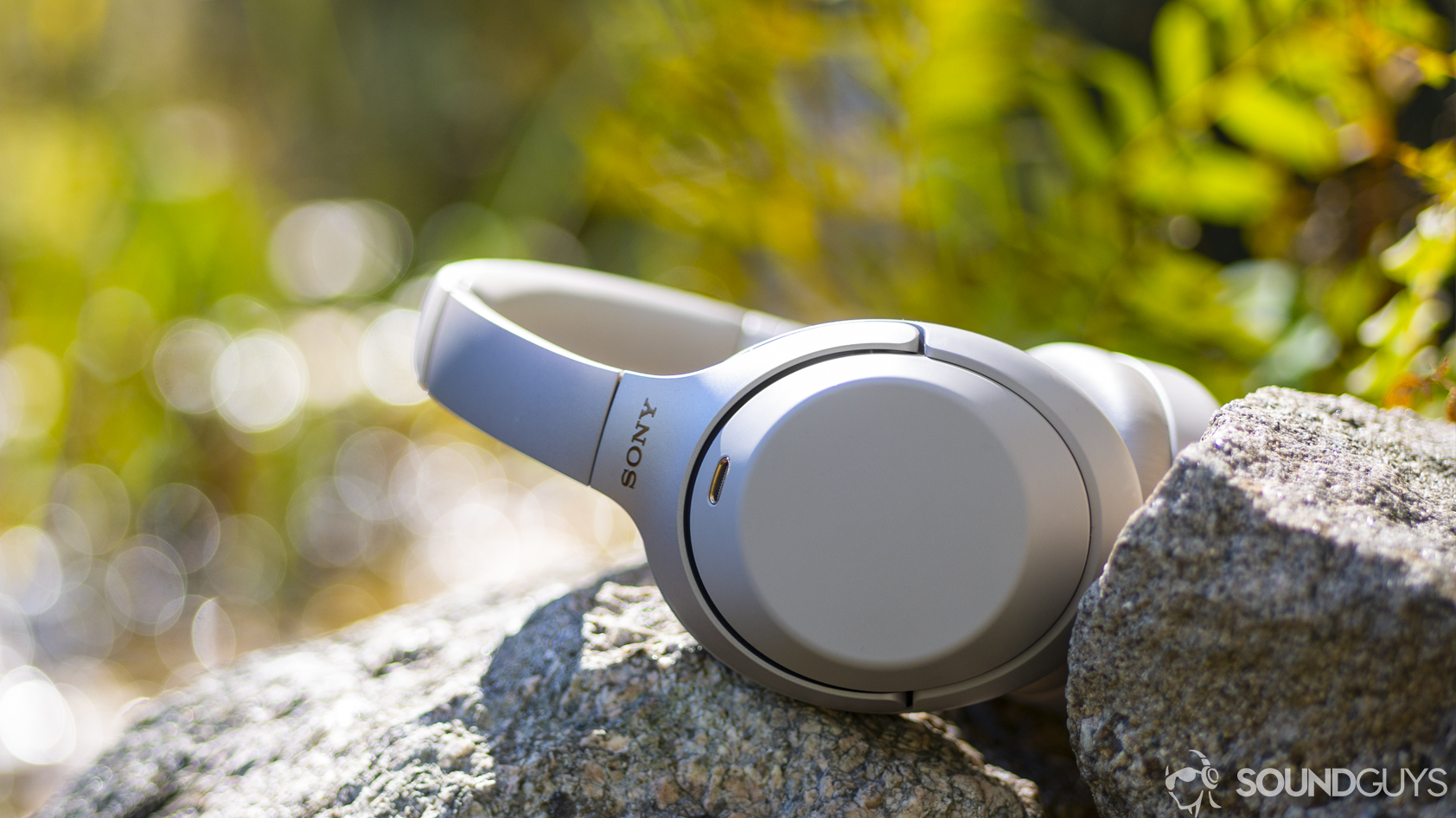
Neither of these headphones is cheap, and the build quality is a testament to that fact. If you’re spending the cash on these, it’s fair to want premium materials, and thankfully you get that here.
Read on: Bose Noise Canceling Headphones 700 review | Sony WH-1000XM3 review
Both headsets have a lightweight yet sturdy plastic construction that keeps them resting comfortably on your head without getting painful. That said, the padding on each of these is slightly different. While the padding on the Bose Noise Canceling Headphones 700 is comfortable, it’s a little stiffer than what you’ll find on the Sony WH-1000XM3. The Bose Headphones 700 also has a lightweight metal headband, so you don’t have to worry about it snapping in half.
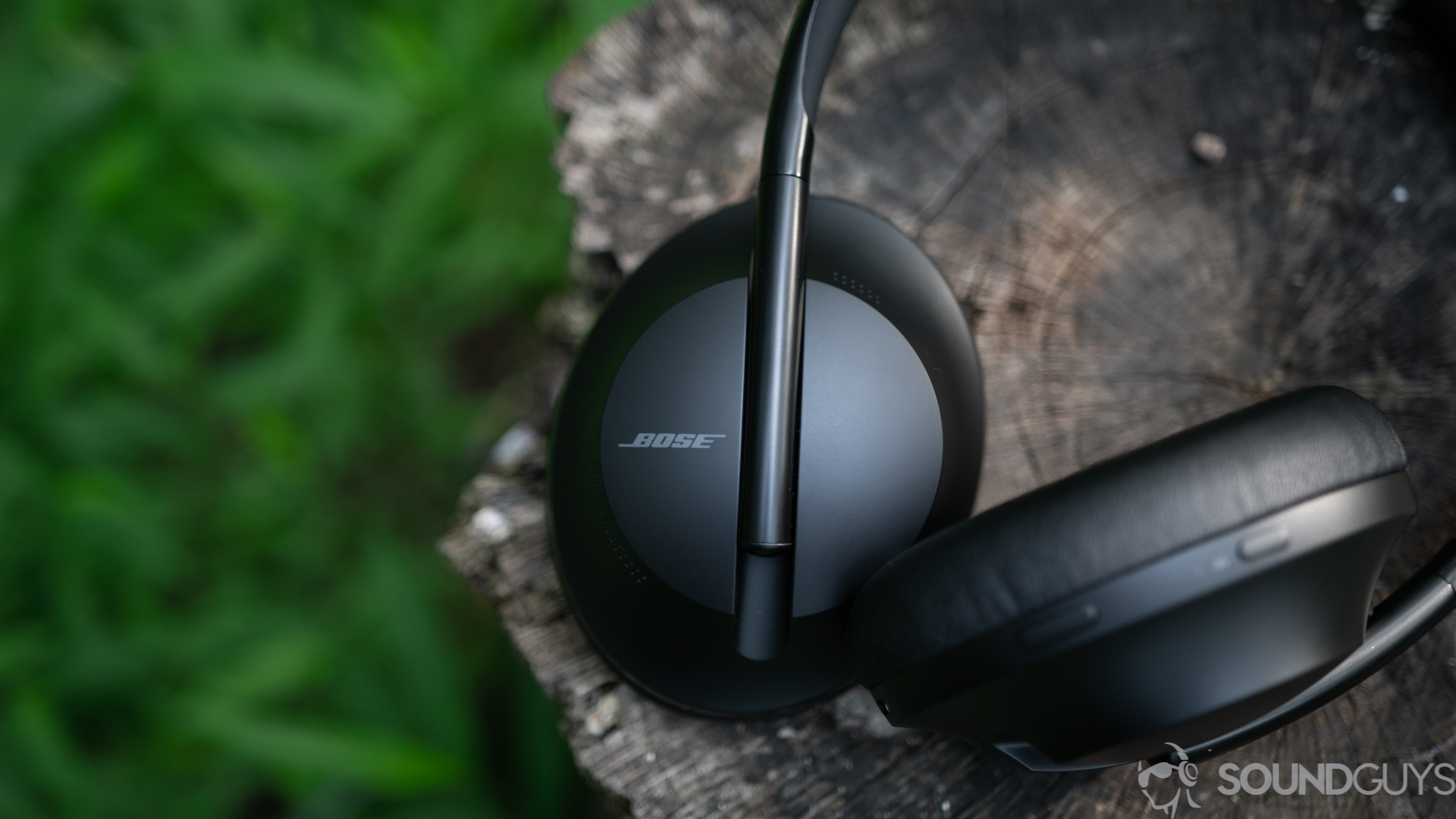
Sony and Bose’s noise canceling headphones feature touch controls on the ear cup for playback. A swipe up or down adjusts volume and skips between tracks, and a tap pauses playback; this is true for either set of headphones. The main surface-level differences between Sony and Bose’s headphones are the portable design and overall appearance.
The Sony WH-1000XM3 has hinges on the headband that lets you fold it down if you need to make it smaller to toss in your bag. While the older Bose QuietComfort 35 II also does this, the Bose Noise Canceling Headphones 700 loses that ability. Thankfully, the ear cups do swivel 90° to lay flat, but still not as versatile as Sony’s. Frequent travelers or commuters will know exactly how important that is when you’re trying to save space.
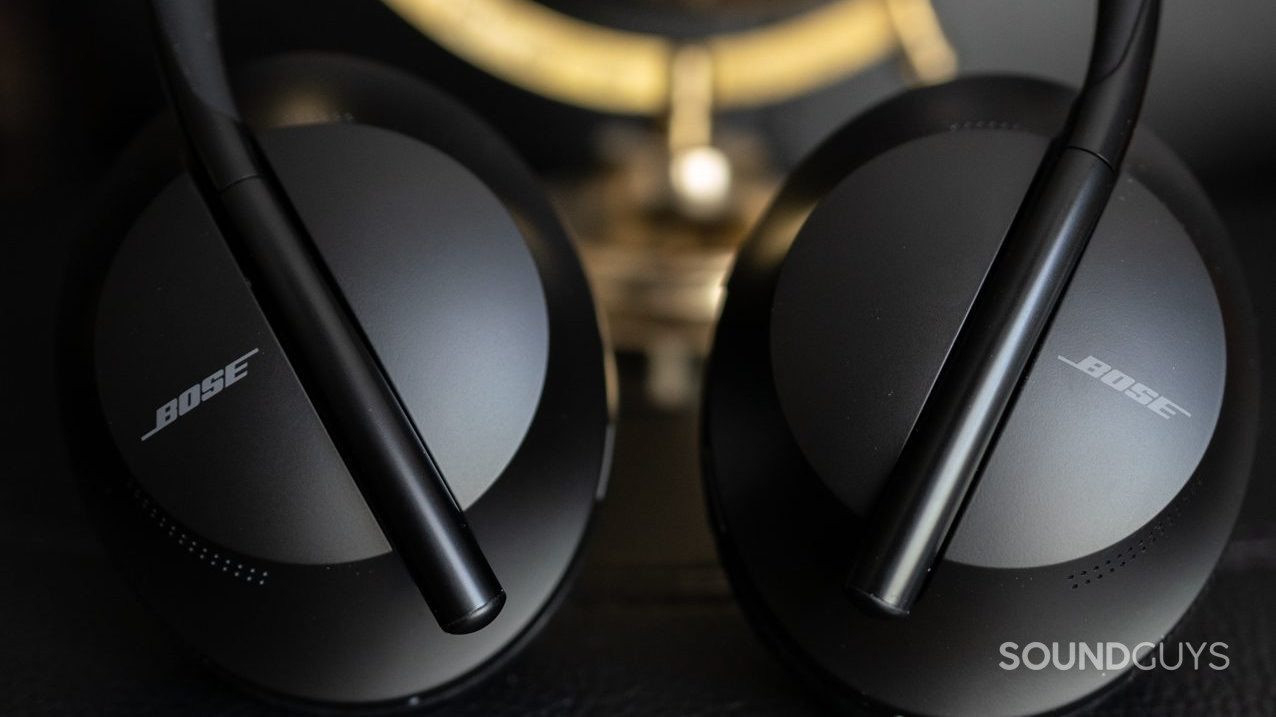
While the differences are minute, they’re stark and should help direct you to the proper pair for you. If you value every centimeter of space then the Sony WH-1000XM3 is the way to go here. If space isn’t a concern, and you value beautiful design, Bose is better.
Do you get more Bluetooth codecs with the Sony WH-1000XM3 or Bose NCH 700?
Another important feature with Bluetooth headphones that you should be aware of is are Bluetooth codecs. These are like languages that Bluetooth products “speak” in order to transfer data wirelessly. The more data that can get transferred means that the sound can be better.
The Sony WH-1000XM3 supports all of the most popular, high-quality Bluetooth codecs.
The Bose Noise Canceling Headphones 700 uses AAC here which is good enough, but still not the best as it doesn’t have the highest transfer data rate. The Sony WH-1000XM3 features basically all of the important Bluetooth codecs including AAC, aptX, aptX HD, and LDAC which is Sony’s proprietary high-res codec. Throw in the fact that the Sony headphones have a standard 3.5mm jack instead of a 2.5mm jack like the Bose headphones do, and it’s pretty clear that Sony has the higher performance ceiling.
The Sony WH-1000XM3 has better battery life than the Bose Noise Canceling Headphones 700
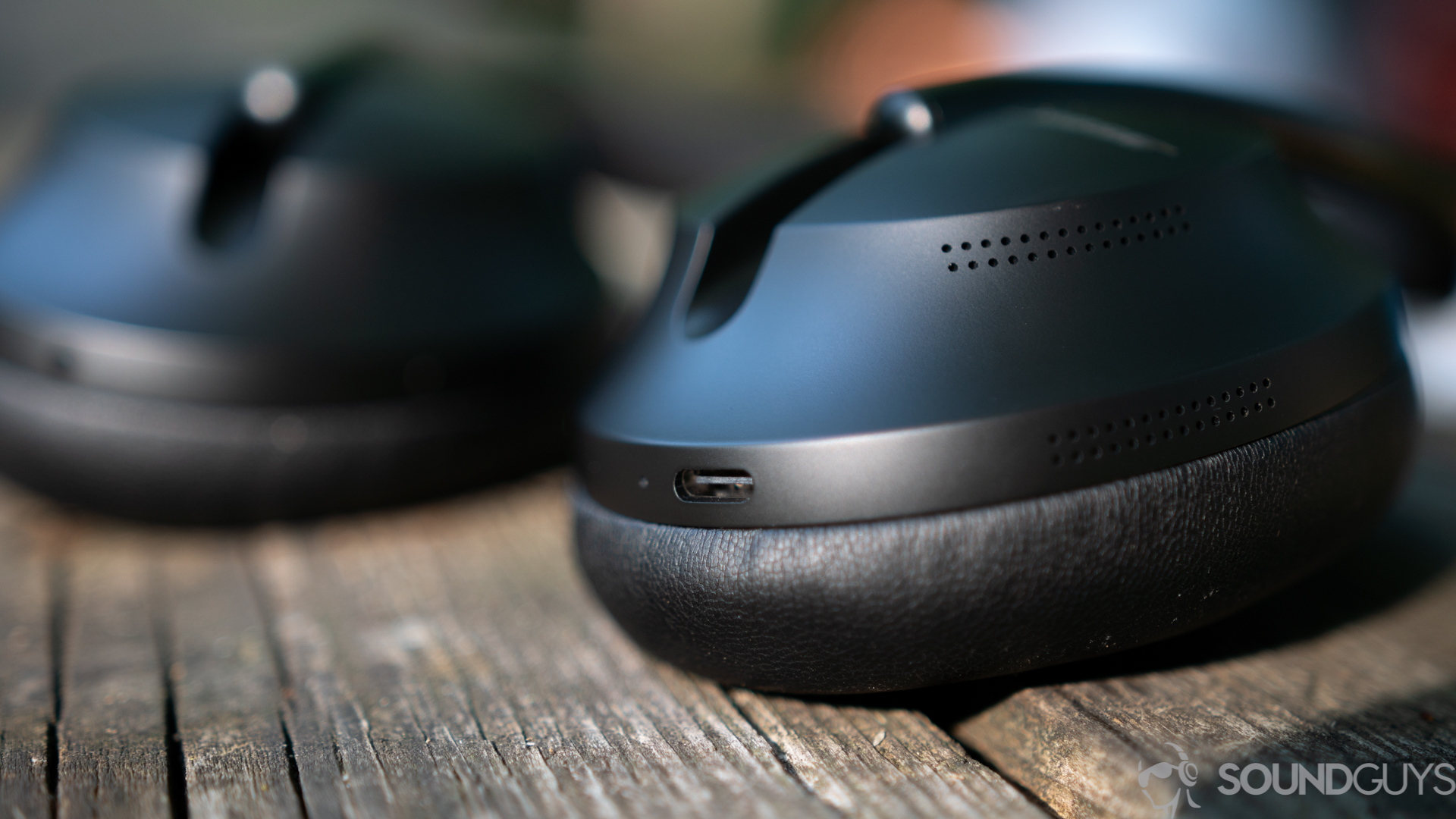
To test the battery life of each headset, we play music at an output that peaks at 75dB(SPL) with ANC turned on until the battery depletes. The Bose Noise Canceling Headphones 700 lasts 21 hours, 25 minutes while the Sony WH-1000XM3 lasts 24 hours. Seeing as both headphones have identical USB-C inputs for charging, Sony comes out on top here again.
Does Bose or Sony have better active noise canceling?
We can sit here all day discussing the beauty of build materials and the design of these headphones, but as anyone who is familiar with Greek art knows that’s a philosophical pursuit that would never end. Instead, let’s bring in some data. The objective testing that we do here at SoundGuys helps us keep opinions out of things that can be spoken about objectively, like noise canceling.
Upon its release, the Bose Noise Canceling Headphones 700 wasn’t as good at attenuating outside noise as its nearest competitors, but that has since changed with firmware version 1.8.2. Before, it was clear that the Sony WH-1000XM3 noise canceling was more effective than Bose’s, but with Bose’s latest firmware, it’s apparent that the Headphones 700 cancels out more sub-bass and low-midrange frequencies than Sony’s headset. We have a detailed breakdown about how to read these graphs, but all you really need to know is this: the higher the peaks on the graphs, the less outside noise you hear.
Still, if you look at the Sony WH-1000XM3 graph you’ll see that Sony’s years-old headset still does a great job of attenuating low and high-frequency sounds. Both headsets will serve you well during a cross-continental flight but the Bose Noise Canceling Headphones 700 outperforms Sony’s in this arena.
That depends, the Bose QC 45 certainly has better ANC performance but ANC isn’t everything. For one, you can’t actually disable ANC on the QC 45 without automatically enabling audio passthrough (which amplifies background noise through the headset). This is an annoying feature and something we wish we could disable. Another disadvantage: the wonky treble response, but at least you can EQ it in the Bose app. The QC 45 is a bit more comfortable than the headsets in question today but that will cost you a pretty penny at $279 USD.
(Click the image to expand.)
Sony WH-1000XM3 vs Bose Noise Canceling Headphones 700: Which headphones sound better?
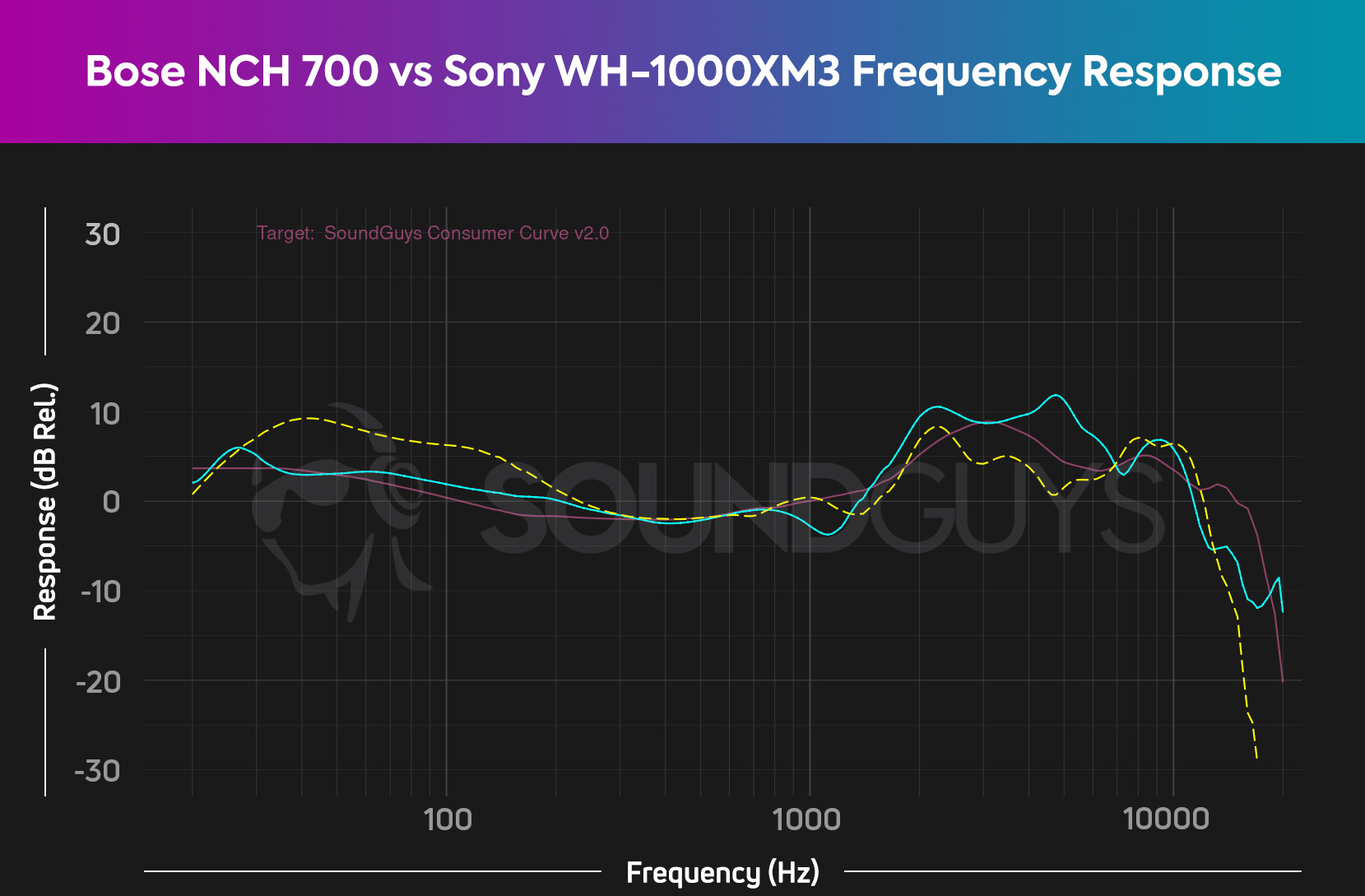
There’s a lot that goes into sound quality and while many people will argue that sound is subjective, but that’s not entirely true. Sure, how you perceive sound and what you consider pleasurable is subjective, but sound itself is nothing but physics. That means a headset’s frequency response can be measured.
The Bose Noise Canceling Headphones 700 sounds great across the frequency spectrum with a bit more of a boost from 2-7kHz than our house curve suggests. If you prefer a bit more bass then you’re better off with the WH-1000XM3 since it emphasizes lower notes a bit more. Not to say that the bass sounds too loud, not at all, but you’ll feel more of that lovely oomph with Sony’s default frequency response.
Of course, this all comes with the caveat that you can change the sound of either of these headphones if you use the companion apps for either. Both the Bose Music and Sony Headphones Connect apps have equalizers, so you can play around with how your headphones sound a bit to match your needs.
Which pair of headphones has the better microphone?
Thankfully, the microphones on both the Bose Noise Canceling Headphones 700 and the Sony WH-1000XM3 are top-notch and you won’t have any serious problems with either of them. Take a listen to our demos below and cast your vote!
Bose Noise Canceling Headphones 700 microphone demo (Ideal):
Sony WH-1000XM3 microphone demo (Ideal):
Which microphone sample do you think sounds better?
Should you buy the Bose Noise Canceling headphones 700 or the Sony WH-1000XM3?
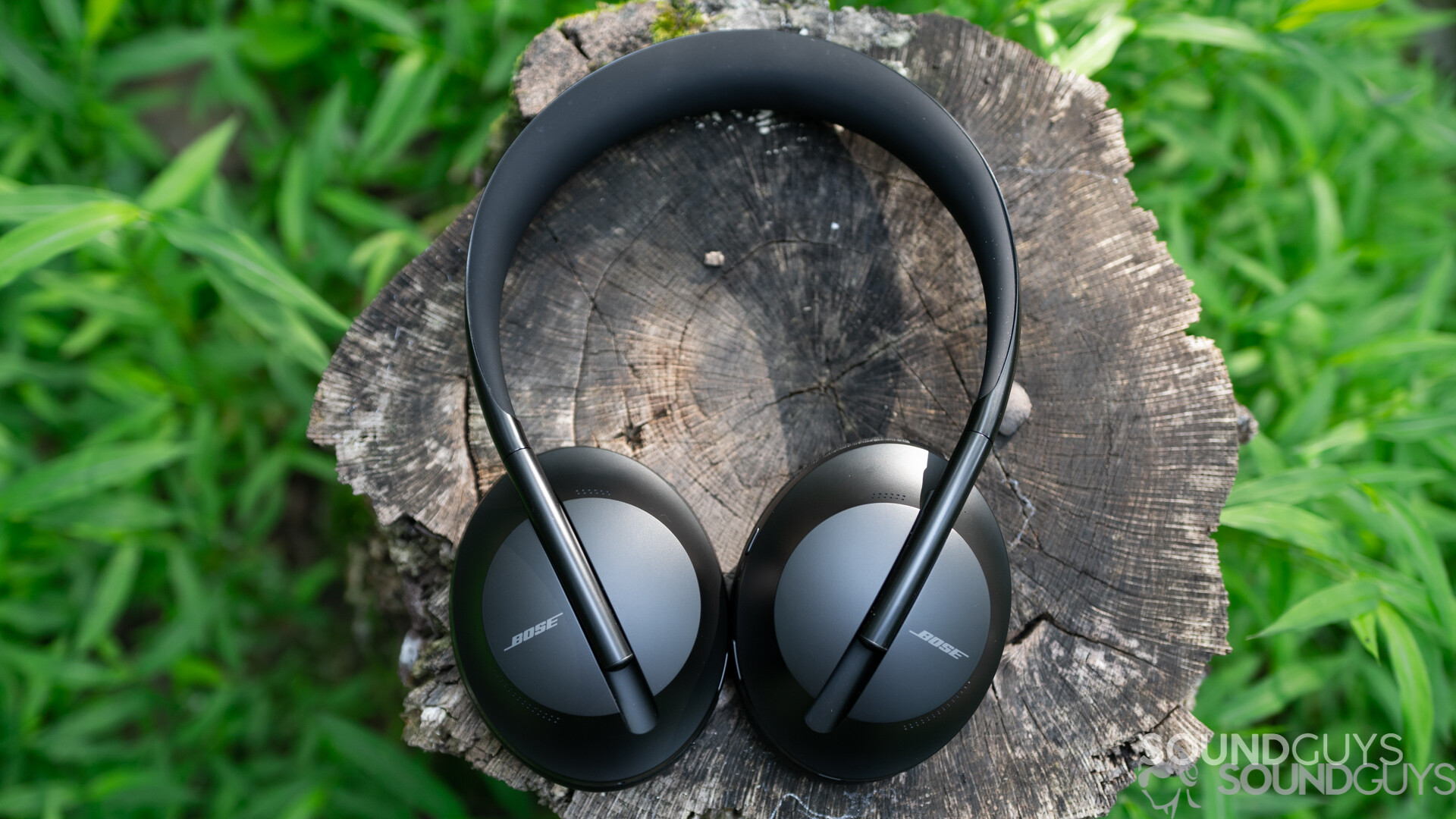
For those keeping score, the Bose Noise Canceling Headphones 700 is generally the better buy, though Sony has a leg up on Bose here in that its older headset is more affordable (thanks to the release of its successor: the Sony WH-1000XM4).
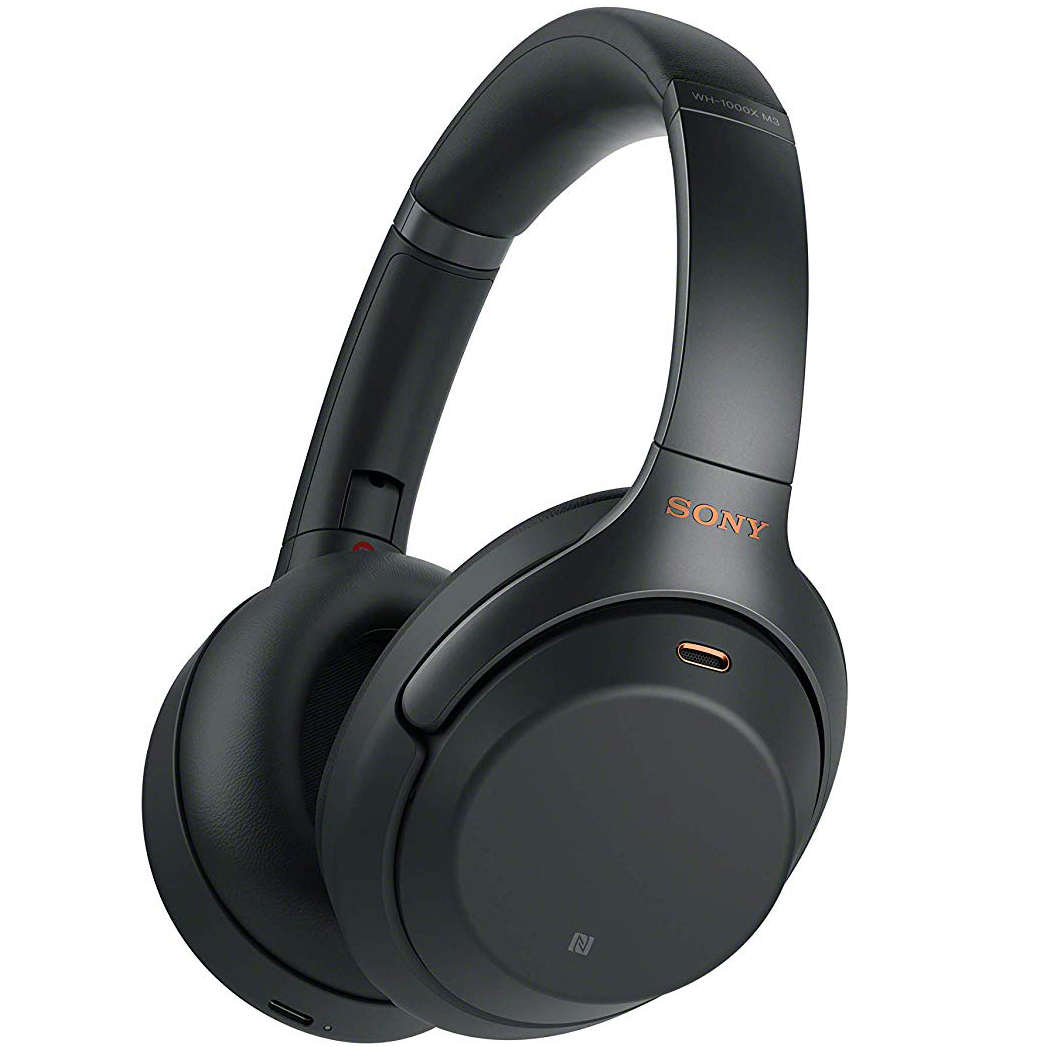
Whichever way you go, you’ll get amazing active noise canceling, great sound, premium build materials, intuitive controls, and decent microphones for your phone calls. These are both class-leading products and you’ll likely be more than happy owning either one. However, the Sony WH-1000XM3 represents the better value.
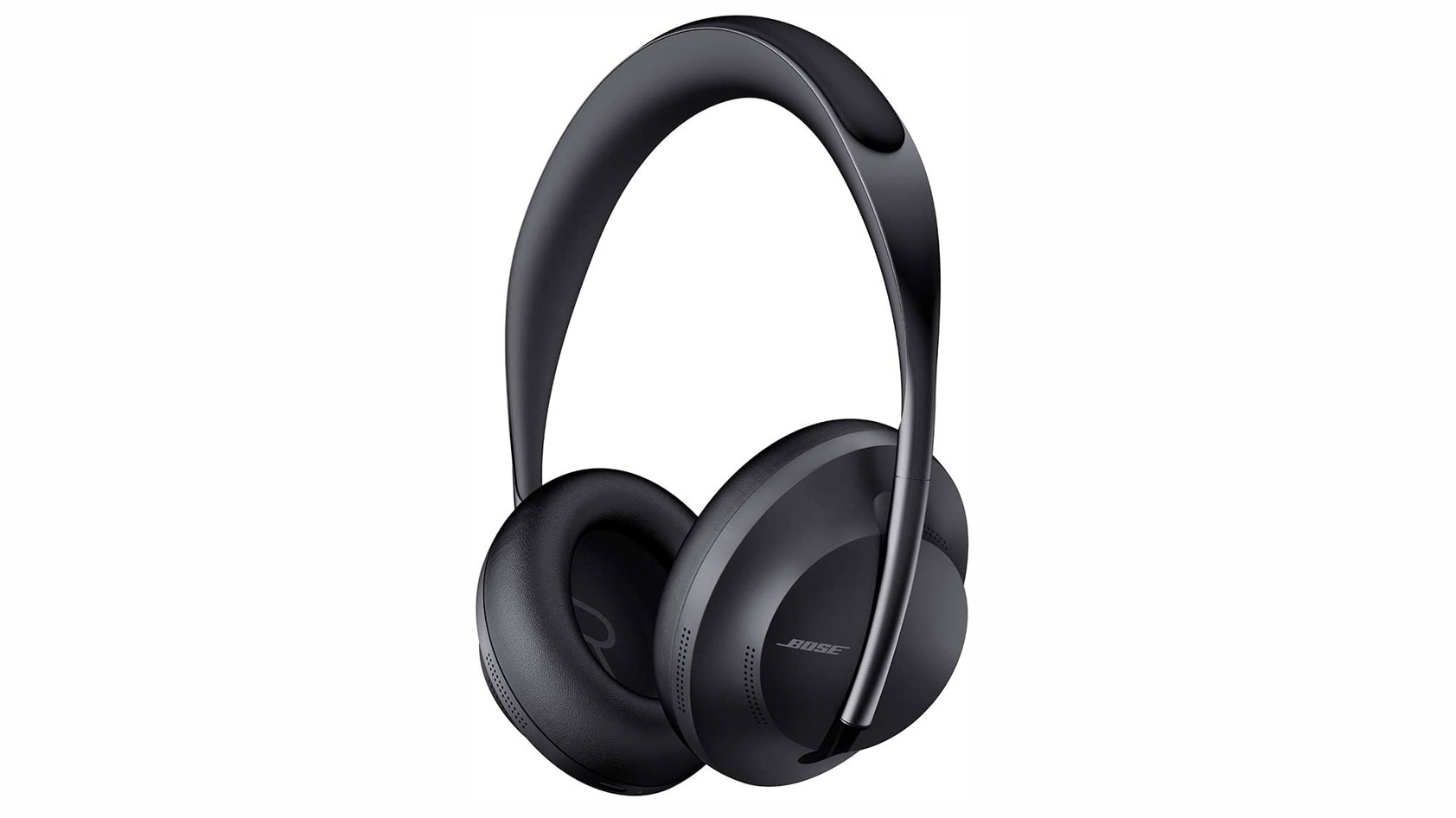
What other noise canceling headphones should you consider buying?
One of the top alternatives to Sony and Bose is the Sennheiser PXC 550-II, a premium headset that costs less than $200 USD and features very good noise canceling. With Sennheiser’s headphones, you get Bluetooth multipoint, a slew of high-quality Bluetooth codecs to choose from, and accurate sound quality that bodes well for all genres of music. The PXC 550-II is meant to go where you do, and compacts nicely for travel.
iPhone owners with a large budget should consider the Apple AirPods Max, which integrates seamlessly with Apple hardware and has the best noise canceling money can buy. The build quality of Apple’s headset is bar none and you get a slew of high-tech software features like Spatial Audio support with head tracking. Of course, all of these features are exclusive to Apple hardware.